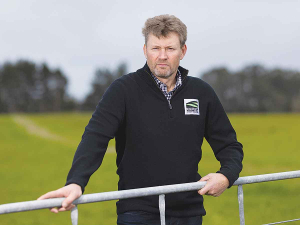Now we look at approaches to developing new antimicrobials. These new drugs will transform the way we treat bacterial infections in humans and animals, giving us tools to combat AMR.
As AMR has spread, our armoury of antimicrobials has been eroded and we are now faced with a shortage of antimicrobials. As global demand grows, the agricultural sector is faced with a ‘perfect storm’ – needing to keep animals healthy, despite the challenges of ever-increasing production and intensification, yet having fewer antimicrobial tools available to do so.
Current antibiotics only target a small number of essential processes in a bacterial cell, and most were discovered in what microbiologists refer to as the ‘golden age of drug discovery’ (1935-1965). Antibiotics are grouped into various classes, based on their chemical structures and, unfortunately, since the 1960s no new classes of antimicrobials have been discovered.
Until recently, antimicrobial discovery focused on existing drugs, relying on chemical tinkering to produce new versions of old compounds. Whilst this was successful for a time, these drugs hit the same old targets and resistance developed quickly.
Most current antimicrobials used in animals and humans are broad-spectrum agents (targeting many differing bacteria) and belong to the same structural classes. Because of this, the licence to use these compounds is being increasingly curtailed, adding to the already urgent need to develop new structural classes of antimicrobials that are not shared between animals and humans.
Our vision for new antimicrobials is to develop narrow spectrum agents that specifically target bad bacteria, with little or no collateral damage to the good bacteria normally present in our bodies. This will overcome the risk of AMR cross-over between animals and humans, which could affect our ability to treat infections in humans.
We have recently taken biomedical research technologies such as high-throughput screening of bacterial cells and redeveloped them for agritech drug discovery.
Our cell-based high-throughput screening allows us to discover antimicrobials that are both specific for a particular target bacterial species and also, importantly, work against the target bug under conditions relevant to the disease or environment. This sounds obvious, but until recently most antimicrobial discovery was only conducted under laboratory conditions, which might be very different from those the bacteria experience in a field, a milking shed or on the udder of a cow. This kind of screening is fast, sensitive and has the potential to deliver hundreds of new compounds.
These new compounds will pave the way for entirely new classes of antimicrobials to be designed for purpose. As well as screening with synthetic chemical libraries we are also using libraries of natural products.
These often have far greater diversity in their chemical structure than synthetics; after all, they have had millions of years to evolve, while scientists have only been making molecules for a few decades. It’s possible that public and consumer acceptance is also higher for natural products. However, ever-increasing sensitivity in detecting residues (harmful or otherwise) in consumer products means we need to develop cost-effective and environmentally friendly inhibitors that don’t end up in products.
As well designing new antimicrobials for farmed animals, our lab is working towards reducing the environmental footprint of agriculture, chiefly greenhouse gas (GHG) emissions in ruminant animals and soils, and nitrate leaching. New Zealand’s GHG profile is unusual in that 50% of these come from agriculture, and methane makes up 35% of this.
The inhibitor 3-NOP was developed in Switzerland to target methane-producing bacteria in ruminant animals. Methane is a potent GHG driving climate change/global warming. 3-NOP is narrow spectrum and does not act on other rumen bacteria (the good bacteria). The inhibitor has been extensively tested in US feedlot animals, reducing methane levels in lactating dairy cows by 30% over 12 weeks. Strikingly, an increase in weight gain, milk protein content and lactose was also recorded. The multiple positive aspects of 3-NOP are encouraging and validate the approach of designing selective molecules to target environmental microorganisms.
So the prospects look bright for the NZ agritech sector to become a world leader in developing custom-made animal remedies that are not used in human medicine.
















